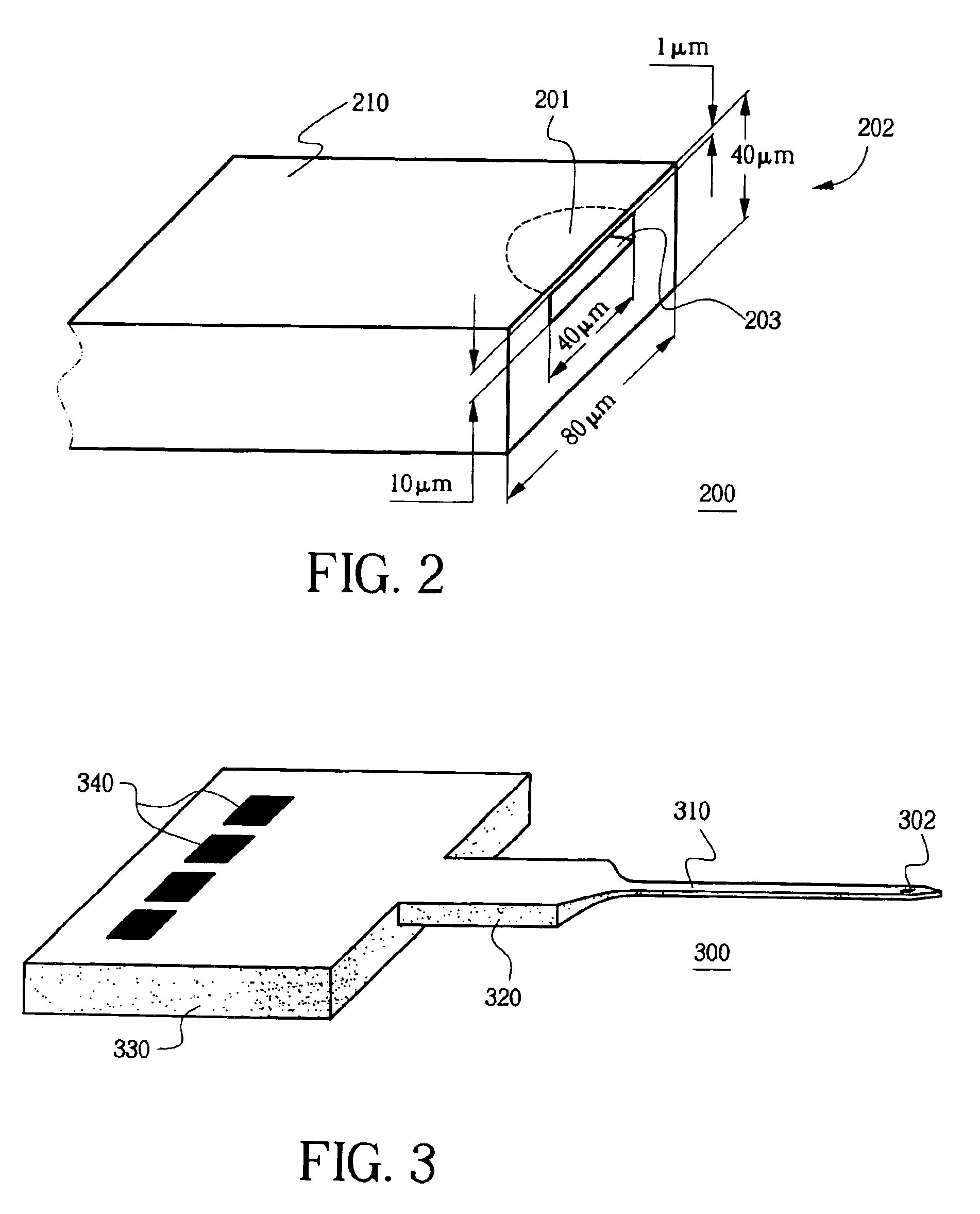Ultra-miniature pressure sensors and probes
a pressure sensor and ultra-miniature technology, applied in the field of ultra-miniature pressure sensors and probes, can solve the problems of distorted dynamic signals, too large risk of introduction and removal, and too narrow arteries for conventional catheter-based pressure sensing techniques, and achieve the effect of high bandwidth and accuracy
- Summary
- Abstract
- Description
- Claims
- Application Information
AI Technical Summary
Benefits of technology
Problems solved by technology
Method used
Image
Examples
Embodiment Construction
[0019]As discussed before, conventional piezoresistive sensors are formed by ion implantation of Boron ions into the surface of a Si wafer. This process is carried out at high implant energy, and results in a layer of boron-doped material that can be several microns thick. The thickness of this doped layer restricts the use of boron ion implantation to structures of at least 5 microns thick. This is the reason that most piezoresistive pressure sensors utilize 10-20 micron membranes. In order to have useful sensitivity to signals of interest, the lateral dimensions must be increased as well, which leads to minimum dimensions of 0.3 mm for commercial piezoresistive sensors.
[0020]Inventor Dr. Kenny's group at Stanford University has been exploring methods of forming ultra-thin piezoresisitve layers in silicon. Rather than relying on ion implantation to form these layers, Dr. Kenny's group has been growing very thin films of doped epitaxial silicon, e.g., 30 nm boron doped films in 1999...
PUM
| Property | Measurement | Unit |
|---|---|---|
| thickness | aaaaa | aaaaa |
| thickness | aaaaa | aaaaa |
| radius | aaaaa | aaaaa |
Abstract
Description
Claims
Application Information
 Login to View More
Login to View More - R&D
- Intellectual Property
- Life Sciences
- Materials
- Tech Scout
- Unparalleled Data Quality
- Higher Quality Content
- 60% Fewer Hallucinations
Browse by: Latest US Patents, China's latest patents, Technical Efficacy Thesaurus, Application Domain, Technology Topic, Popular Technical Reports.
© 2025 PatSnap. All rights reserved.Legal|Privacy policy|Modern Slavery Act Transparency Statement|Sitemap|About US| Contact US: help@patsnap.com



